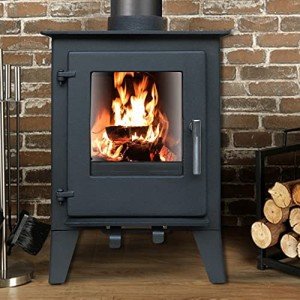The Versatility and Appeal of Modern Multi-Fuel Stoves
In the realm of heating solutions for homes, the modern multi-fuel stove sticks out as an ingenious and useful choice. Integrating performance, versatility, and aesthetic charm, these stoves have acquired extensive popularity among house owners wanting to boost their living areas. This article delves into the features and advantages of modern multi-fuel stoves, supplies insights on their performance, and addresses common questions regarding their usage and upkeep.
What is a Multi-Fuel Stove?
A multi-fuel stove is developed to burn various kinds of solid fuels effectively. These can include experienced wood, coal, peat, and other biomass products. simply click the following internet page to make use of various fuel types makes it an attractive option for those looking for flexibility in their heating techniques, especially in areas where fuel availability differs.
Benefits of Multi-Fuel Stoves
The benefits of modern multi-fuel stoves extend beyond their flexibility. Here are some key benefits:
| Benefit | Description |
|---|---|
| Versatility | Capable of burning various fuels depending upon availability. |
| Cost-Effectiveness | Prospective for lower heating costs due to fuel choices. |
| Eco-friendly | Wood and biomass fuels can have a lower carbon footprint. |
| Effective Heating | Advanced combustion innovation optimizes heat output. |
| Aesthetic Appeal | Available in numerous designs to match home design. |
Functions of Modern Multi-Fuel Stoves
Modern multi-fuel stoves are created with user benefit and effectiveness in mind. Some functions commonly found in contemporary designs consist of:
- Airflow Control: Adjustable air controls allow users to manage combustion and heat output efficiently.
- Secondary Combustion Systems: These systems help burn unspent fuel, enhancing efficiency and minimizing emissions.
- Glass Door Panes: Many stoves include large glass doors for exposure and atmosphere while keeping heat.
- Integrated Ash Pan: Facilitates simple clean-up and maintenance after use.
- Flue and Chimney Options: Compatibility with numerous flue types improves installation flexibility.
Selecting the Right Multi-Fuel Stove
When thinking about a multi-fuel stove, a number of elements must influence the decision-making procedure. Here are a few crucial considerations:
- Size and Capacity: Assess the space to be heated and pick a stove that meets those requirements.
- Fuel Types: Check which fuels are readily available and assess the stove's compatibility with those fuels.
- Efficiency Ratings: Review the stove's efficiency score and emissions to determine its ecological impact and heating potential.
- Design and Aesthetics: Choose a style that will fit your home's decoration and individual taste.
- Setup Requirements: Consider the space required for installation, consisting of flue systems and clearances.
Setup and Maintenance of Multi-Fuel Stoves
Appropriate setup and maintenance are vital for the safe and effective operation of multi-fuel stoves. Here's an introduction of the setup procedure and vital maintenance practices:
Installation Process
- Select a Location: Identify a suitable spot that permits sufficient air flow and heat distribution.
- Set up the Foundation: Ensure the stove is on a non-combustible surface, such as brick or stone.
- Establish the Flue and Chimney: Follow local building regulations for flue setup and chimney height.
- Connect to Fuel Source: Ensure safe connection and clearance from any flammable products.
- Last Checks: Conduct thorough checks to guarantee everything is safely connected and operating properly.
Maintenance Practices
- Regular Cleaning: Clean out ash and particles after each use to maintain air flow and performance.
- Chimney Inspection: Have the chimney checked annually to avoid creosote accumulation, which can cause fires.
- Check Seals and Gaskets: Ensure that the seals and gaskets stay undamaged to improve performance and avoid heat loss.
- Fuel Quality: Use dry, experienced wood or quality coal to reduce residue buildup and boost performance.
FAQs About Multi-Fuel Stoves
Can I utilize various types of fuels at the same time?
- No, it's recommended to utilize one type of fuel at a time to optimize combustion effectiveness.
Are modern multi-fuel stoves environmentally friendly?
- Yes, they can be more environment-friendly than traditional heater, especially if utilizing sustainable fuels like wood or biomass.
How much does it cost to run a multi-fuel stove?
- Running costs depend on fuel rates, use frequency, and stove performance. Examining regional fuel costs will offer a clearer picture.
Do I need a special installation for a multi-fuel stove?
- Yes, installation requirements might differ; it's advisable to speak with an expert installer to guarantee compliance with regional codes.
Can multi-fuel stoves be utilized for cooking?
- Yes, some models can be utilized for cooking, however it's necessary to examine maker requirements for cooking capabilities.
In conclusion, modern multi-fuel stoves use a trustworthy, efficient, and visually pleasing solution for heating homes. Their adaptability to various fuel types not just enhances versatility but can likewise result in cost savings and a decreased ecological footprint. By comprehending their features, setup needs, and upkeep requirements, homeowners can make informed decisions about integrating these flexible heating options into their home.
With the increasing relocation towards sustainable living, modern multi-fuel stoves are poised to stay an important component of home heater for years to come.

